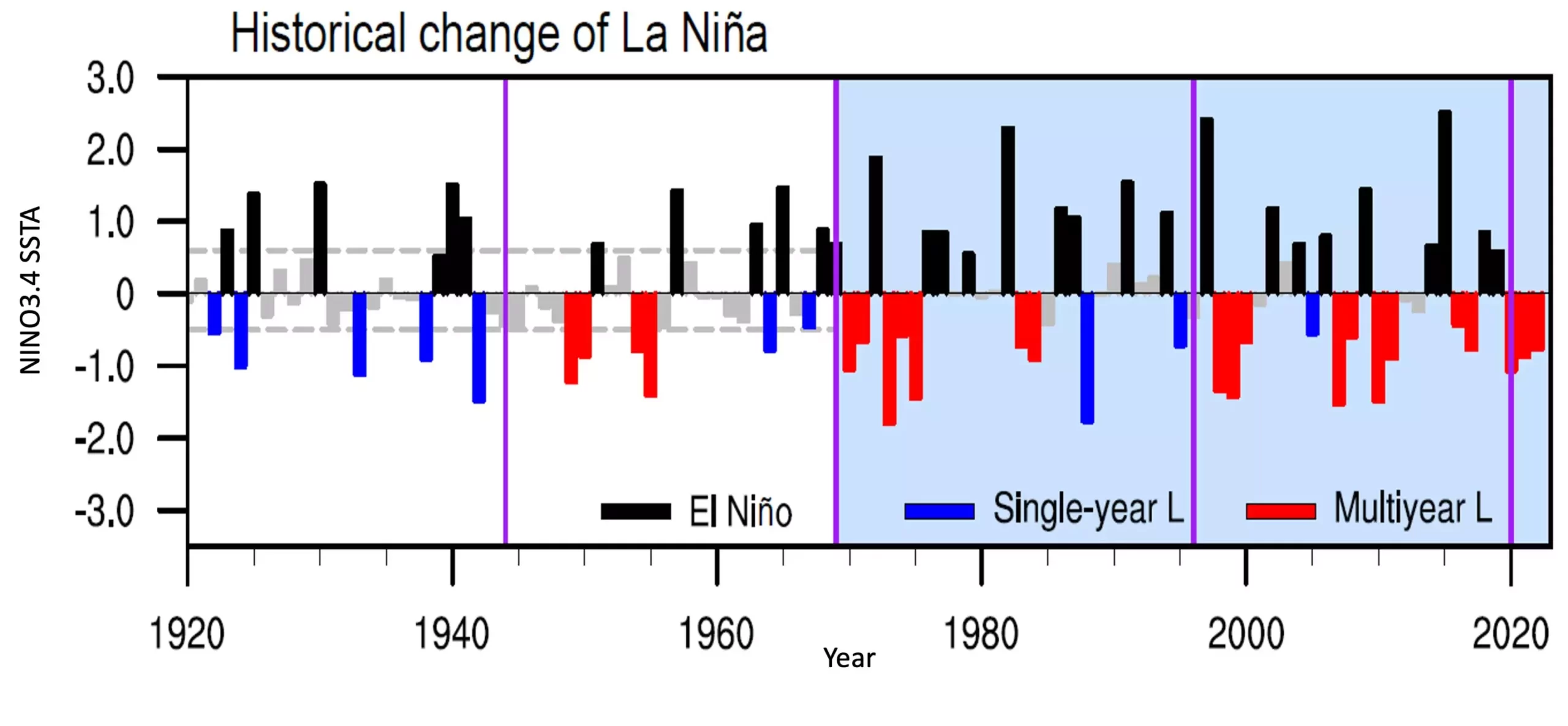In a recent study led by atmospheric scientist Bin Wang from the University of Hawai’i, it has been found that multiyear La Niña events have become more frequent over the past century. This discovery raises concerns about the potential impacts of these prolonged events on weather patterns, ocean conditions, and various industries, including tourism and agriculture. With only ten such events recorded since 1920, the clustering of multiyear La Niña events is alarming, calling for further investigation into the causes and potential future occurrences. This article examines the implications of this study and explores the factors contributing to the increase in these events.
La Niña is a climate pattern characterized by the cooling of sea surface temperatures in the tropical Pacific, resulting in various weather and oceanic phenomena. It is the counterpart of El Niño, the warm phase of this recurring pattern. The shift between these two phases can have significant consequences for global weather patterns, with impacts ranging from droughts and floods to changes in storm tracks. Recognizing the importance of understanding La Niña events, scientists have been studying their behavior and potential long-term implications.
Traditionally, La Niña events were often observed to last for a single year. However, the recent study led by Bin Wang indicates a concerning trend towards multiyear La Niña events. Out of the six events since 1998, five have extended for more than one year, with one unprecedented triple-year event. This deviation from the historical pattern raises questions about the factors contributing to this increase and the potential future frequency of such events.
To shed light on the underlying reasons behind this shift, Wang and his colleagues analyzed 20 La Niña events that occurred between 1920 and 2022. Their findings challenge the assumption that long-lasting La Niñas are solely triggered by the aftermath of super El Niño events. While this connection was observed in the past, the recent multiyear La Niña episodes did not follow this pattern. Instead, the study revealed that these events are fueled by warming in the western Pacific Ocean and steep temperature gradients from the western to central Pacific.
According to Wang, the warming in the western Pacific acts as a catalyst, triggering the rapid onset and persistence of multiyear La Niña events. The research also highlighted that these events can be distinguished from single-year La Niña events by their conspicuous onset rate, which hints at their accumulative intensity and climate impacts. Complex climate simulations further support the observed link between multiyear La Niña events and warming in the western Pacific Ocean.
The increase in multiyear La Niña events has significant implications for communities and various industries across the globe. Prolonged La Niña events can lead to persistent climate extremes and severe weather events, impacting community resilience, tourism, and agriculture. The tourism industry, for instance, heavily relies on stable weather conditions to attract visitors, and disruptions caused by prolonged La Niñas can have severe economic consequences for tourist destinations. Similarly, agricultural practices and productivity can be greatly affected by shifts in climate patterns, posing challenges for food security and livelihoods.
As researchers delve deeper into the causes and consequences of multiyear La Niña events, it is evident that further studies are needed to better understand the implications for communities and the environment. The findings of this study emphasize the role of warming in the western Pacific as a driver of these events, highlighting the need to monitor and better predict changes in sea surface temperatures. By gaining a comprehensive understanding of the mechanisms behind multiyear La Niñas, scientists and policymakers can develop strategies to mitigate the potential impacts on vulnerable communities and industries.
The increase in multiyear La Niña events over the past century is an alarming trend that calls for urgent attention and further investigation. Understanding the causes and consequences of these prolonged events is crucial for developing effective strategies to mitigate their impacts on communities and industries. As the scientific community continues to unravel the complexities of La Niña patterns, it is essential to prioritize proactive measures that promote climate resilience and adaptation. By doing so, we can safeguard both our global ecosystems and the well-being of communities affected by these extreme climate phenomena.



Leave a Reply